My photography is about people but often without people – stories in objects and surroundings about their lives and lifestyles.
Japan probably conjures up many thoughts – crowds, temples (Buddhist) and shrines (Shinto), Shinkansen, mount Fuji, and more. City workers’, ‘salarymen’ in Japanese, lifestyles are centred around their employment, traditionally at the same company for their entire lives, with a wife and children at home. And make no mistake, Japan is a very traditional society still, with by far the majority of girls giving up their careers on getting married, staying at home, cooking, cleaning, bearing and looking after children. After work husbands continue ‘work’ with their colleagues in a favourite izakaya – the Japanese equivalent of a pub/restaurant in the UK.
While passing time ahead of a booking at my favourite Italian restaurant in Tokyo near Tamachi station, I wandered around a nearby old-fashioned pedestrian area packed with izakaya taking photos. Izakaya tend to be inexpensive and, depending on size (varying from a one man show to larger businesses with four or so chefs and many waiters/waitresses), serving a range of food (often including potato fries as I’m sure you’re concerned to know). Some izakaya specialise – yakitori (grilled chicken), oden (a kind of stew), though sushi and sashimi are best eaten in the more expensive specialist restaurants. Of course the area will contain a few other shops but generally Japanese towns tend to have a general shopping area, a drinking district, but often a separate ‘night-life’ district.
I carried my Leica iiig and 50mm f3.5 (coated) Elmar, a wonderfully compact and lightweight combination with several pluses over any other film camera which I’ll describe further in another article. Portra 400 was new to me having been photographing B&W for several years and, in my colour days, was dedicated to Velvia after the demise of Kodachrome. Now I find Velvia’s colours to be garish and too much in-your-face, rather childish, and I prefer a more neutral representation. I was surprised at the ability of Portra and the Elmar to handle the night lights, colourful and garish in themselves, in such a realistic way.

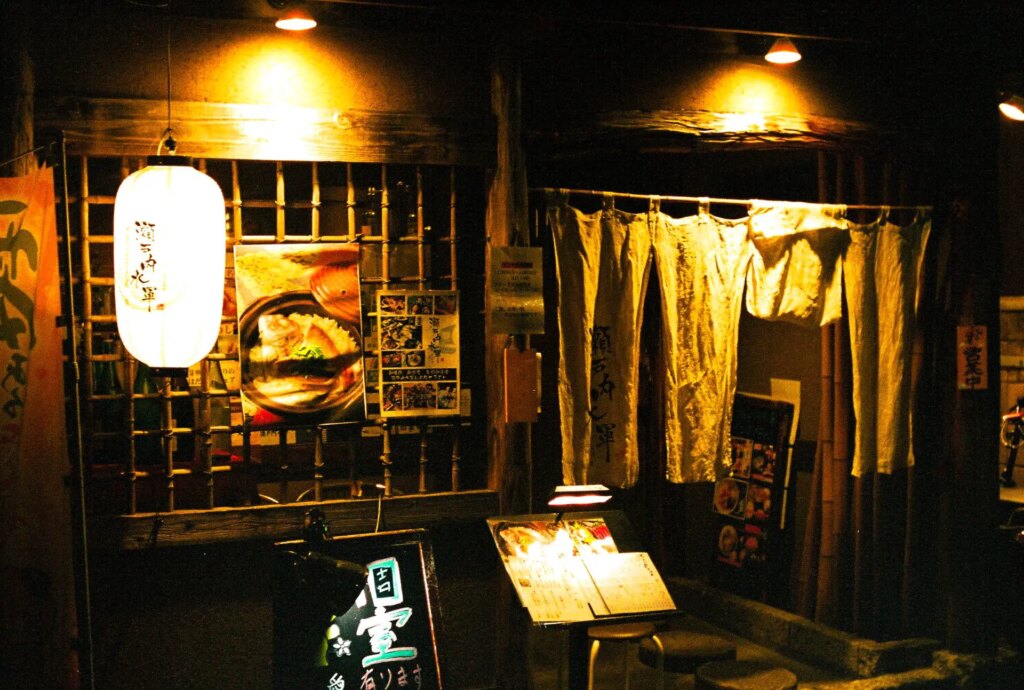
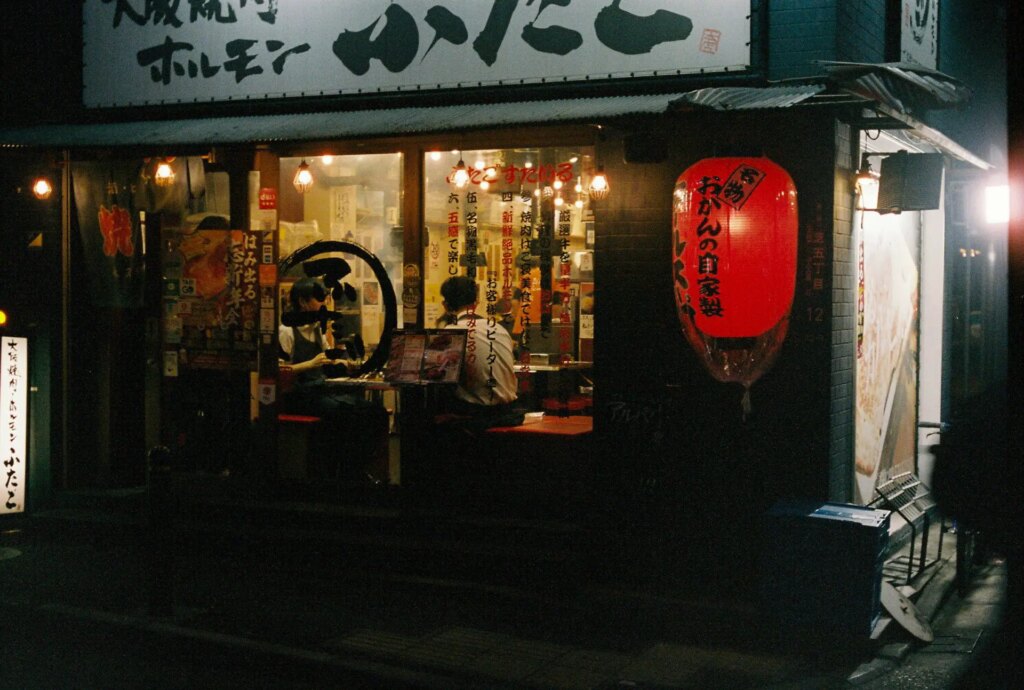
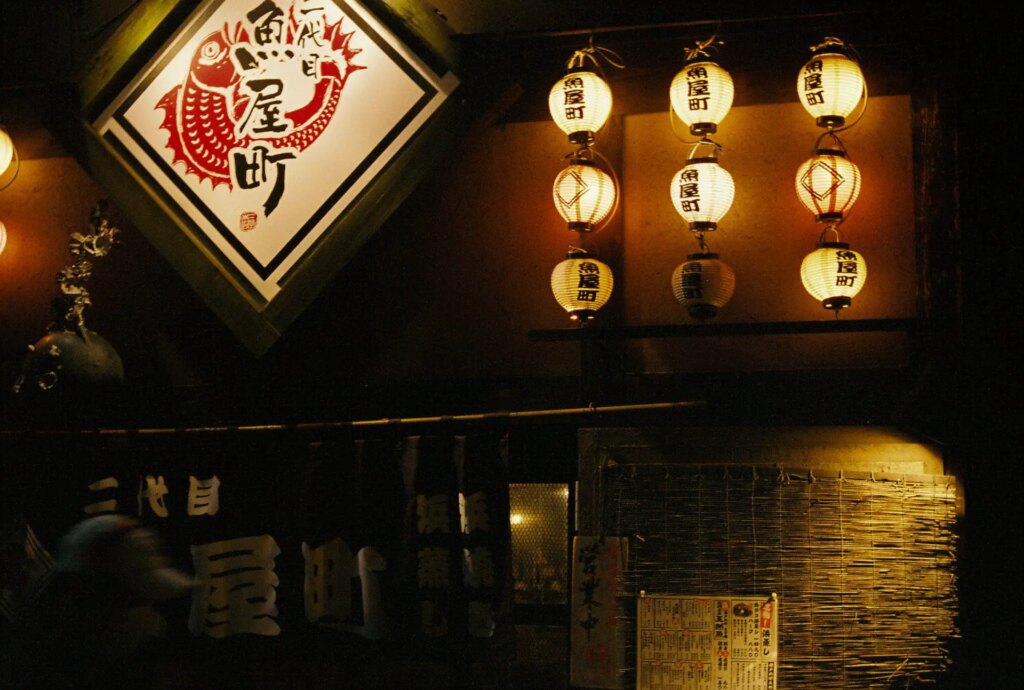
Maybe the elephants in the room are and f4 lens and, what!, no tripod??? My thoughts were an f2 or faster lens can be great for portraiture but for a street landscape the depth of field is too shallow, f4 represents an acceptable compromise. And, of course, 35mm is intended to be hand-held plus a tripod would be difficult to set up in a narrow crowded street. Exposure times varied from 1/60th down to 1/15th and post-processing was limited to contrast adjustment and occasionally minor cropping or straightening.
Thanks for reading
Share this post:








Comments
Ibraar Hussain on Drinking districts in Japan I: Tokyo with a Leica iiig, 50mm Elmar f3.5 and Portra 400 – By Geoff Chaplin
Comment posted: 26/03/2023
I really like Japanese food, culture, language and custom and really like the fact that they have the traditional and conservative values I admire and believe in! Thank you !
Tim Bradshaw on Drinking districts in Japan I: Tokyo with a Leica iiig, 50mm Elmar f3.5 and Portra 400 – By Geoff Chaplin
Comment posted: 26/03/2023
Comment posted: 26/03/2023
Pete Keevil on Drinking districts in Japan I: Tokyo with a Leica iiig, 50mm Elmar f3.5 and Portra 400 – By Geoff Chaplin
Comment posted: 26/03/2023
Comment posted: 26/03/2023
Philippe Bertramo on Drinking districts in Japan I: Tokyo with a Leica iiig, 50mm Elmar f3.5 and Portra 400 – By Geoff Chaplin
Comment posted: 26/03/2023
Cheers
Phil
Comment posted: 26/03/2023
Mariaa on Drinking districts in Japan I: Tokyo with a Leica iiig, 50mm Elmar f3.5 and Portra 400 – By Geoff Chaplin
Comment posted: 27/03/2023
Comment posted: 27/03/2023
Comment posted: 27/03/2023
Kurt Ingham on Drinking districts in Japan I: Tokyo with a Leica iiig, 50mm Elmar f3.5 and Portra 400 – By Geoff Chaplin
Comment posted: 27/03/2023
Comment posted: 27/03/2023
Michael Avison on Drinking districts in Japan I: Tokyo with a Leica iiig, 50mm Elmar f3.5 and Portra 400 – By Geoff Chaplin
Comment posted: 09/04/2023
Comment posted: 09/04/2023
Comment posted: 09/04/2023
Comment posted: 09/04/2023